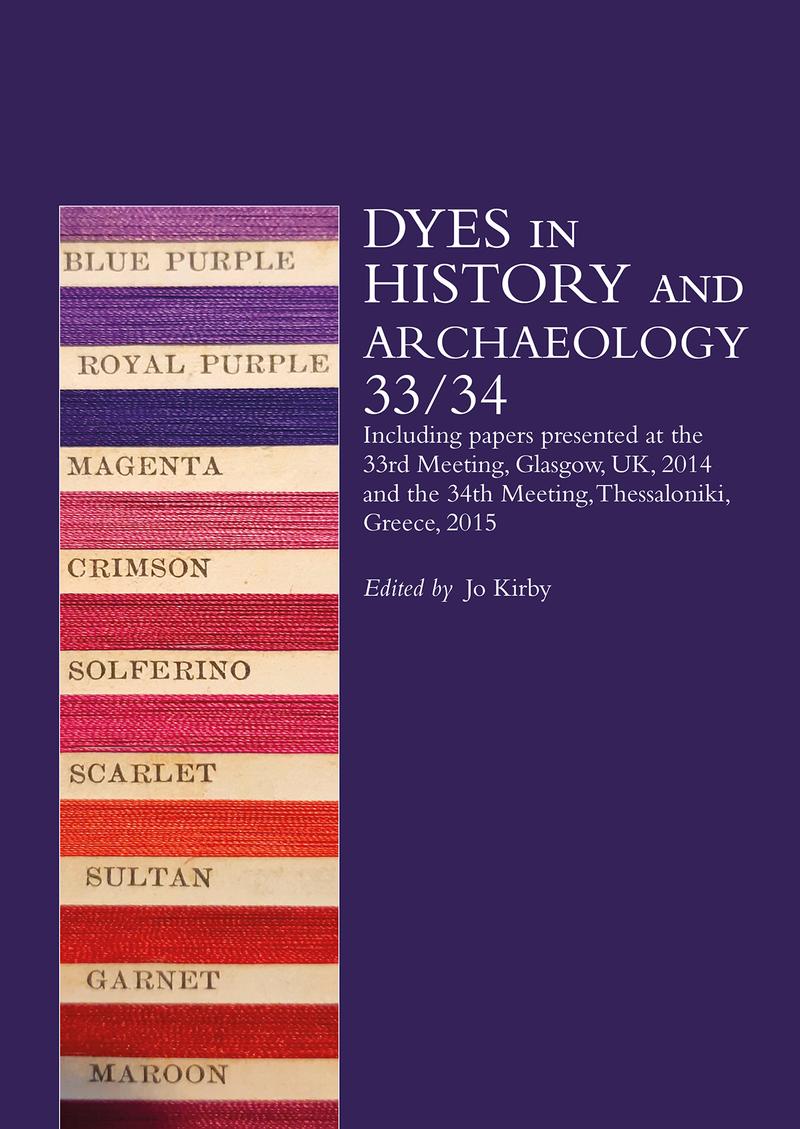The nineteenth and early twentieth centuries were a time of change in the technology of dyes and dyeing: brilliantly coloured synthetic dyes came onto the market and were welcomed into the world of fashionable clothing. Natural dyes still had a part to play, however: locally available dyes could make a significant contribution to the revival or development of the economy of a region, such as the Scottish Highlands during the First World War.
The dye extracted from a plant growing in one region may differ slightly from that found in a closely related species growing in another; the Japanese and Chinese species of Phellodendron (Amur cork tree and related plants) are a good example. Analysis of the dyes used for a fabric may thus suggest the region in which it was dyed. Trade records can provide additional useful evidence, as shown by a comparison of dyed textiles from the Ryukyu Kingdom (Okinawa and neighbouring islands) and Indonesia.
The use of non-invasive spectrometric methods to examine dyes and pigments has increased considerably, notably portable methods that can be taken to the object. This is essential in the case of manuscripts that cannot be moved from the library holding them, such as the Aztec Codex Borbonicus. The application of multispectral imaging techniques to textile dyes is relatively recent and if high-performance liquid chromatography can also be carried out, as in the case of the Italian polychrome laces described in this book, valuable and informative results can be achieved.
These are some of the topics presented at the 33rd and 34th meetings of Dyes in History and Archaeology held in Glasgow (2014) and Thessaloniki (2015): other analytical methods, historical Chinese dyeing practices and the always fascinating topic of indigo may also be found in this book.
Please click here for a look inside the book
Mjölon or ‘Swedish Sumac’, Arctostaphylos uva-ursi (L.) Spreng., as a Dye Source and Mordant
Margareta Bergstrand
The Politics of Colour: Recovering the Dye-Producing Lichens of the Scottish Highlands in June 1916
Vanessa Habib
The Activity of Dyers in Thrace during the 19th and 20th Centuries
Ifigeneia Papakonstandinou
A Study of Dye Colour Charts of the 1860s to 1880s and their Adoption According to the Fashion of the Period
Susan Kay-Williams
Sulfur Dyes in Nearly Every Colour and Shade
Matthijs de Keijzer and Regina Hofmann-de Keijzer
Scarlet or Mock, or Not: Using SERS on Small Samples to Elucidate Dyeing Processes
Terry T. Schaeffer and Diana C. Rambaldi
Mass Spectrometric Study of Protoberberine Alkaloids in Historical Textiles Dyed with Amur Cork Tree and Related Species
Yoshiko Sasaki, Ryohei Fukae and Ken Sasaki
Pseudoindirubin: A Marker for Woad-Dyed Textiles?
Richard Laursen and Chika Mouri
The Rate of Light-Induced Fading of Indigo-Dyed Textiles
Vincent Daniels
The Poor Wash Fastness of Indigo-Dyed Threads from a Group of 6th–9th Century Central Asian Silk Weft-Faced Compound Twill Weavings
Hélène Dubuis
A Comprehensive Study of Textile Dyeing Techniques of the Ming and Qing Dynasties, China
Jing Han and Anita Quye
Chemical Analysis of Red Dyes in Selected Textiles from Chin and Karen Ethnic Groups of Myanmar by LC–DAD–ESI–MS
Victor J. Chen, Gregory D. Smith, Mariah Whitaker and Burkhard von Rabenau
Analysis of Dyes in Noro Priestess Textiles from the Ryukyu Kingdom
Chika Mori
The Investigation of Dye Sources in English Turkey Work Carpets by Ultra Performance Liquid Chromatography (UPLC–PDA) Analysis
Lore Troalen, Rosie Upton, Jamie Mulherron and Alison N. Hulme
Reading Polychrome Laces: Multispectral Imaging Techniques on Historic Textiles from the Collections of the Metropolitan Museum of Art
Chiara Romano, Joanne Dyer and Nobuko Shibayama
Identification of Organic Colorants in Persian Manuscripts
Ambra Idone, Maurizio Aceto, Monica Gulmini, Angelo Agostino, Gaia Fenoglio and Mojtaba Mahmoudi Khorandi
Non-Invasive Characterisation of Organic Colorant-Based Paints of Prehispanic Mesoamerica: The Colours of the Codex Borbonicus
Fabien Pottier, Anne Michelin, Aurélie Tournié, Christine Andraud, Fabrice Goubard, Ludovic Bellot-Gurlet, Anne Genachte-Le Bail and Bertrand Lavédrine
